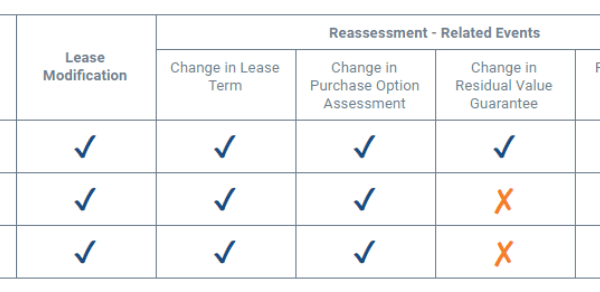This post originally appeared on Marketplace Advertiser, Reonomy and is republished with permission. Find out how to syndicate your content with theBrokerList.
*Originally published in Commercial Observer
One of the major real estate stories of the pandemic was the decline in rents in big cities like New York and the subsequent rise of home and apartment prices in surrounding suburbs. The cause was obvious: with urban density exacerbating the spread of COVID and causing city dwellers to be stuck isolating in their cramped apartments, the prospect of the sort of indoor and outdoor space one could find in the suburbs sounded like a life saver.
But as these concurrent trends exploded, they fed a narrative which claimed that American cities like New York were dying. Urban is out and suburban is in, some boldly predicted, giving oxygen to cries of “New York is dead” that hadn’t been heard since the early 1980s.
Now that vaccinations have taken hold, however, many people who left cities are starting to return, and the death of urban centers is proving to be, as it always is, more myth than reality.
A new report from Reonomy cements the notion that the death of big cities due to COVID-19 has been greatly exaggerated.
For “Big Money: Portfolio Insights from Institutional Managers,” Reonomy surveyed 35 large institutional money managers with portfolio allocations totaling over $425 billion in property value for around 2.6 billion square feet of commercial property. The purpose of the survey was to determine where big money was being invested.
Among the survey’s revelations was the finding that the much-hyped exodus from big cities was not accompanied by a corresponding loss in big money investment.
“Big Money aggregate 2020 investment activity showed a clear slow down in allocations to major cities during the pandemic. However, the large decline in investment activity was most pronounced in only a handful of markets (i.e., Washington DC, San Francisco, Miami, Dallas, and Houston), and not indicative of a widespread loss of faith for these large population centers,” read the report. “In some cases, Big Money investment in the top 20 markets increased both year over year and compared to their 10-year average allocation to the large markets (i.e., Atlanta, Boston).”
Despite the negative hype, these findings have not surprised those who have been following investment activity throughout the COVID-19 pandemic.
“Premier cities like New York continue to be a draw to investors given the economic, financial, and cultural opportunities they afford to young professionals and more seasoned demographics alike,” said Eric Anton, a senior managing director with Marcus & Millichap. “Repurposing of assets, from hospitality to senior housing, for example, may be part of investment strategies, but interest in core urban centers is not going away.”
Part of this might be attributable to the faith Big Money firms continued to place in traditional office models, including the return to the office in major urban centers post-COVID.
“Despite the surprisingly effective shift to a remote work and work-from-home model, pandemic investment activity by the Big Money managers showed faith that the office will refill,” read the report.
“The Big Money managers allocated $42.85 of every $100 of new investment into the property type through 2020. Historically, the Big Money managers allocated closer to 34% of new investment towards the property type. The Big Money managers bought 37.2 million square feet of office space during the pandemic, only 4% less than they bought the year earlier; and yet, on average they paid 12% more per square foot acquired. The Big Money investment in high-quality office assets in prime locations (top five: New York, Los Angeles, Boston, Seattle, San Jose) suggests that these managers anticipate a meaningful return to the office.”
And while Big Money kept the faith in normalcy, the decline in COVID infection numbers in recent months thanks to increased vaccinations have showed them that their faith is about to pay off.
“We’re definitely in the upward swing of the recovery,” said Christopher Warner, a senior associate at Marcus & Millichap. “We’re starting to see more deals close like the Northern NJ Portfolio, which was a 24-building, $92,500,000 transaction our firm closed at the beginning of the year. We are also marketing a large hotel in Herald Square which has garnered interest from investors all over the US. We anticipate a pick up of larger transactions taking place later this year.”
It’s also worth noting that while certain second tier markets saw significant increases in investment – Charlotte, Minneapolis, and Nashville in particular saw major jumps – the cities that Reonomy Research determined were top markets for investors in 2020 still included the top urban centers. New York was #1 on the list, followed by Seattle, Los Angeles, Boston, and Atlanta.
This analysis was made possible by Reonomy’s recently launched Ownership Portfolios, which provides users with an in-depth understanding of all assets owned by a single individual or company including asset mix, location, debt profile, and tenant mix of the portfolios. This sort of information has traditionally been a manual, labor-intensive challenge to compile, focused only on the largest owners and REITs. Reonomy’s knowledge graph enables comprehensive portfolio intelligence by harnessing AI to connect all information on properties, transactions, people, and companies. Organizations across commercial real estate leverage Reonomy’s portfolio insights to solve a multitude of problems, including growing client relationships, identifying investment opportunities and local operating partners, and improving risk assessments.
Reonomy was founded on the acknowledgement that data informing the commercial real estate industry is disparate and opaque. Their team of experts leverages big data, partnerships, and machine learning to connect the fragmented world of commercial real estate, empowering top brokerages, financial institutions, and commercial services providers with actionable data and solutions.



